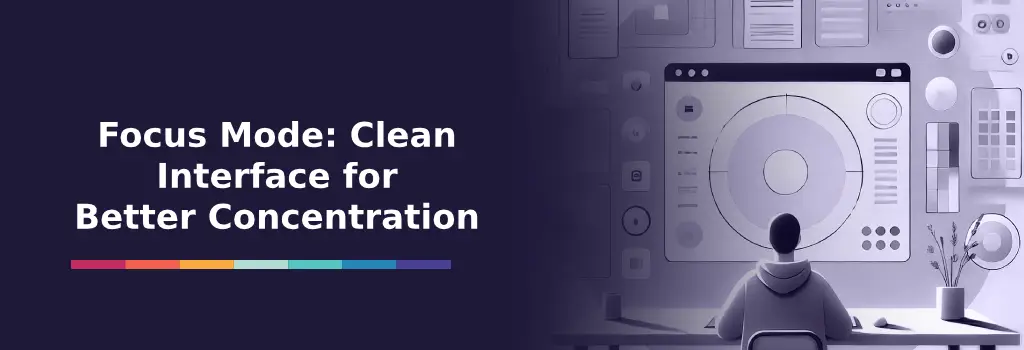Moodle offers a robust set of tools that can dramatically enhance the learner experience—without relying on third-party plugins. Many organizations overlook the capabilities already embedded within Moodle, assuming they need external apps or advanced coding to improve engagement. In reality, when configured and styled properly, Moodle’s native features can provide a clean, focused, and structured learning experience.
To say that Mindfield Consulting is Planet SHIFT Inc.’s key strategic technology partner is an understatement. They play a pivotal role in helping us delight our clients, providing valuable guidance, forefront thinking, and creative, sustainable solutions — simply – honest and excellent work. As a change agent, I rely on my Mindfield partnership to unlock the possible, and for just under a decade I have never been disappointed. Our clients’ projects range in complexity and criticality, and the credibility of my company’s brand accelerates when Mindfield is included in the assignment. We reinvent businesses together.
Eileen Kirk
review Source: Google Reviews
Outline
Focus Mode: Clean Interface for Better Concentration

Focus Mode refers to the practice of simplifying the Moodle interface by removing unnecessary navigation blocks and emphasizing the central course content. While Moodle does not label this feature explicitly, its layout and theming tools support the creation of distraction-free environments.
Benefits include:
-
A cleaner interface that minimizes distractions
-
Improved readability, especially on mobile devices
-
Enhanced learner concentration during assessments or guided activities
Challenges to consider:
-
Essential navigation tools may be hidden if not configured properly
-
It may require theme-level customization using CSS or JavaScript
-
Learners unfamiliar with Moodle might need orientation
How to apply Focus Mode using CSS:
.block, .secondary-navigation {
display: none;
}
#region-main {
width: 100%;
}
For clients with advanced UX goals, we use JavaScript to remove dynamic page elements or trigger simplified layouts conditionally:
.availabilityinfo {
color: gray;
font-style: italic;
}
We often guide clients through theme selection or customization—particularly with modern interfaces like RemUI or custom Boost-based themes—to implement and control Focus Mode sitewide or per course.
Activity Completion and Conditional Access

Two of the most impactful yet underutilized features in Moodle are activity completion tracking and conditional access settings. Together, these features create a more personalized and structured learning experience.
With proper configuration, learners can be guided through course material in a specific sequence. For example, completing a video can unlock a quiz, and passing a quiz can reveal the next activity.
Key steps include:
-
Enable completion tracking in course settings
-
Set activity-based completion rules (such as viewing, submitting, or receiving a grade)
-
Use access restrictions to control when each activity becomes available
-
Create visual indicators of progress using progress bars or dashboards
Custom styling can enhance the experience. For example, restricted activities can be greyed out to signal prerequisites:
Our consultants help ensure that completion logic aligns with your training objectives, reducing confusion and helping learners navigate the course with clarity.
Choosing the Right Course Format

The layout of your Moodle course has a direct effect on learner engagement. Moodle provides several built-in formats that can be tailored to your training needs.
| Format | Recommended Use | Advantages | Limitations |
|---|---|---|---|
| Grid | Visual learning, short modules | Clean navigation with thumbnails | Requires high-quality images |
| Weekly | Date-driven courses | Aligns with fixed schedules | Can become cluttered over time |
| Collapsible Topics | Large or modular content | Organized and user-friendly | May rely on JavaScript |
Our team helps organizations evaluate the best format for their content and audience, including applying light branding or usability enhancements with CSS.
Using Notifications and Reminders Effectively

Moodle includes a range of messaging and reminder tools that can boost learner engagement without the need for external services. These include:
-
Notifications for upcoming due dates
-
Forum digest summaries via email
-
Custom alerts using Moodle’s event monitoring tools
For organizations with disengaged learners, properly configured reminders can re-engage users and improve completion rates. Advanced implementations may include integration with third-party platforms using webhooks or custom scripts, which our technical team can support.
Why Built-in Features Are Often the Better Option

While there are many excellent plugins available for Moodle, relying on them too heavily can introduce maintenance overhead, compatibility issues, and unnecessary complexity.
Built-in Moodle features already offer:
-
-
Structured learning sequences through completion tracking and access restrictions
-
Customizable interfaces using CSS and layout settings
-
Communication tools for learner engagement
-
-
Clean, mobile-responsive theming options
Before turning to third-party plugins, our consulting team helps clients evaluate what is achievable using native tools. In many cases, the results match or exceed expectations without the added complexity.
Built-In Power, Expert Precision

Hiring expert Moodle developers offers a clear advantage when it comes to unlocking the full potential of Moodle’s built-in features. While many tools like Focus Mode, activity completion, and access restrictions are available out of the box, configuring them effectively—and customizing them for your organization’s needs—requires deep familiarity with Moodle’s structure, theming, and logic. Expert developers ensure that changes are made safely, align with accessibility standards, and remain upgrade-friendly, reducing long-term maintenance costs.
Moreover, experienced consultants can help avoid common pitfalls such as broken layouts, misconfigured roles, or inconsistent user experiences. They bring strategic insight to course structure, performance optimization, and user interface customization—helping organizations achieve a polished, branded, and learner-friendly environment without relying on excessive plugins. In short, expert support turns Moodle from a generic platform into a tailored, scalable learning solution.

